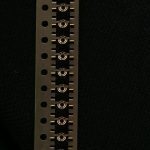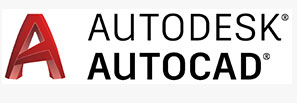
On the internet, you will find the best information about die stamping.
You will learn the following:
- How does die stamping work?
- Die stamping types (progressive and transfer)
- Metals used for die stamping
- Plus much more.
What is Die Stamping?
A die stamping process is a cold forming technique in which a sheet of metal, called a blank or tool steel, is cut and shaped using a single or series of dies to create a desired shape or profile. When force is applied to a blank, the geometry is altered, and this creates stress, which allows the workpiece to be bent or shaped into complex shapes. Depending on the application, these parts can either be exceptionally small or extremely large.
Die stamping, also known as pressing, involves a number of operations such as punching, blanking, piercing, coining, and others. Each punch needs to be designed precisely for maximum results.
The dies in die stamping are specialized tools that have been customized to create a specific design, such as very simple everyday items or complex computer components. Die designs can be designed to perform a single function or to be part of a series of steps.
There are three types of die stamping manufacturing processes:
- Line: a single-step process
- Transfer: Stamping is a multi-step process
- Progressive: most popular and widely used
Die Stamping Operations
The dies used to stamp perform two functions – cutting or forming, with some dies performing both. There are several types of operations designed to cause separation or plasticization, allowing it to take the shape of plastic.
Forming dies are:
- Bending
- Flanging
- Drawing
- Stretching
- Coining
- Ironing
Cutting dies are:
- Shearing
- Blanking
- Trimming
- Notching
- Piercing
Bending
Bending creates shapes similar to an L, U, or V. This is a plasticizing process that stresses the yield strength, but not tensile strength, over a single axis.
Flanging
Flanging is the process of bending a workpiece along a curved axis. It can be done either by stretching or shrinking. During the flanging process, tension and compression are common, which is determined by the length of the tab. It produces curves or corners by simply moving the press downward.
Drawing
Metal drawing is a metal flow process that replaces the surface of the workpiece with another shape with the same area. It maintains the thickness of the metal. A drawing’s direction is crucial because it affects how the part will move, be cut, and be ejected.
An example of deep drawing would be one that is non-directional, meaning the direction can be up, down, or vertical.
Stretching
Tension and thinning increase the surface area of the workpiece. As a result, it gives the surface a smooth finish. The metal is stopped by high pressure binding. The metal is usually dent-resistant.
Coining
Patterns are produced by squeezing the workpiece under extreme pressure, which thins the metal.
Ironing
The process of ironing is similar to coining. Its purpose is to reduce the wall thickness of the workpiece by squeezing it at a depth of 30 percent of the workpiece’s thickness. By ironing, one can increase the length of the drawn vessel as well as unify the wall thickness.
Blanking
A metal sheet is blanked along a specific contour line. Simply put, it is cutting one part of a sheet away from another.
Shearing
The shearing process produces a straight line cut, which can be utilized for parallel cuts, as well as angles.
Piercing
As with blanking, piercing also involves cutting. In blanking, the part is punched out before it is assembled. Piercing involves removing a piece of scrap, leaving the piece of metal that remains. This is determined by the punch dimensions.
Trimming
To conform to a desired profile, a form’s perimeter edge is cut away. During the die stamping process, excess material around a form has to be removed using this process.
Notching
Bending or cornering can be assisted by notching. The process is carried out on the outside of a workpiece to create a specific profile.
This is only a sampling of the many dies available.
Having a complete selection of die types is available by consulting a die stamping manufacturer.





